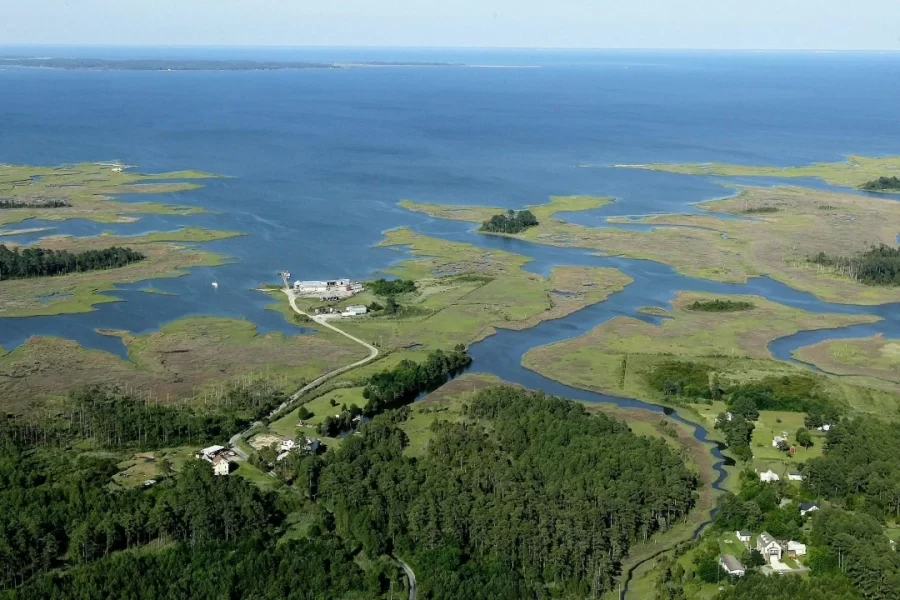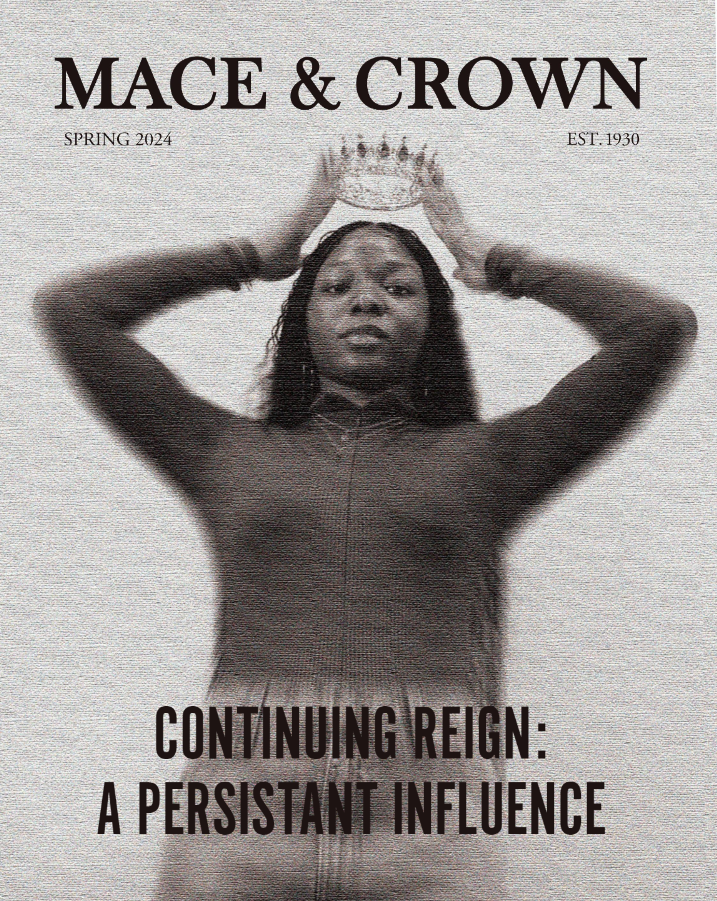There’s no question that Old Dominion University sits upon sinking land. With the threat of sea-level rise, disastrous weather events, and rising temperatures by the year, the campus of ODU is in danger without plans for coastal resilience. Studies have indicated that there is not a question of whether the city will drown or not, but when?
This Fall, ODU welcomed ecosystem ecologist and biogeochemist, Dr. Ariana Sutton-Grier to speak as part of the Paul W. Kirk Jr. Memorial Lecture series for Wetlands Ecology. She was able to shed some light on how Norfolk’s initiatives to lessen the impact of climate change show impressive leadership. Sutton-Grier’s involvement in coastal resilience began soon after she saw the effects of superstorm Hurricane Sandy in 2012. She began working with the National Ocean Service to solve environmental problems by bridging science and policy. After Hurricane Sandy’s destruction which mainly affected New York and New Jersey, coastal resilience was pushed to the forefront of the conversation about climate change.
“That’s the one thing I hate about disasters,” Sutton-Grier says, “that it takes a disaster to get to that point, but if you are ready when the disaster strikes, you can capitalize on the aftermath of a disaster to make progress. Suddenly, there’s a willingness and there’s funding that’s not available when everything is blue skies and we’re all happy.”
Capitalizing on the aftermath of a disaster is exactly where coastal resilience starts. In 2012, Hurricane Sandy brought dangerous flooding to low lying areas including Norfolk. Within the next year, Norfolk was chosen from a pool of 1,000 applicants by the private, New York-based organization, The Rockefeller Foundation. This foundation pioneered the program 100 Resilient Cities to help address environmental problems in different cities all over the world. In Jan. 2016, the U.S. Department of Housing and Urban Development announced the three winners of its Natural Disaster Resilience Competition, awarding New York, New Orleans, and Norfolk, all members of the 100RC.
The cities received more than $437 million in disaster resilience funding. The grant was the largest ever received by the city of Norfolk with the amount reported to be $120 million. Just this past summer, the Rockefeller Foundation announced an $8 million commitment to continue supporting the 100RC initiative, despite the program coming to an end in mid-2019.
Funding received from foundations similar to the Rockefeller Foundation is often used to either restore the environment that is the present or create infrastructure to make a community more resilient to natural events. Some of these infrastructures include flood walls, elevated roads, and planting more trees. To date, Norfolk has already invested the majority of their funding into these infrastructures that can be completely natural, hybrid, or built.
Sutton-Grier comments on the obstacles of funding these projects if there is a lack of extra funding, “There’s an urgency to this that I feel like people are not getting. And of course, it’s really hard for people right now to say ‘Yeah we should invest a billion dollars in this and then it’s going to benefit us in 20 years or 40 years. People are inherently bad at this. And it’s not just about coastal resilience, it’s about all sorts of things.”
According to Sutton-Grier and many other experts, there has to be political and social will to make some kind of change, and Norfolk has garnered that attention from its residents and its government. The ecologist elaborates on a case study that she and her colleagues are currently working on where they compare significant bodies of water such as the Chesapeake Bay, Tampa Bay, and Puget Sound with San Francisco Bay.
“Chesapeake Bay has received an enormous amount of federal funding as well as a lot of federal expertise, so the goal of federal money and expertise has been huge. Not to say that it also has not been state funds or local agencies, because it’s not just federal. But the role that the federal government has played in the Chesapeake Bay restoration is quite significant.”
Federal funding seems to be the holy grail of investing in coastal resilience and restoration for at-risk areas, but there has been a large switch recently in how the federal government is protecting U.S. waterways. In Sept. 2019, the Trump administration announced the repeal of a major Obama-era clean water regulation which clarified which wetlands and waterways are protected and placed limits on the polluting chemicals that are permitted for use near wetlands. On the other side of things, Sutton-Grier doesn’t believe that climate change mitigation has gotten where it needs to be yet.
“It’s very hard as we have changes in administration too because you have those like the Obama administration where they made a huge effort to think about climate change mitigation but also some on adaptation. And then we have that switch flip and a bunch of work undone,” Sutton-Grier says.
Although the Trump administration’s rollback comes at the end of the term, a lot can still happen before 2020. Sutton-Grier thinks that even without federal funding, cities and communities have options at local and state levels to protect their environment. In other cities that receive more federal expertise than federal funding, they have created ways to do it on their own.
“In other examples, there’s been some federal expertise that has been very important but the role of federal funding has been a lot smaller and they have figured out how to fund things at a more local level, through state funding and community funding and working across different partnerships. In the case of San Francisco, Californians voted to tax themselves to pay for that restoration effort, which I think is kind of amazing”.
With climate change still being dismissed by some political movements, as well as federal rollbacks on protecting wetlands, there could be a change in how funding is allocated in the future. However, Sutton-Grier thinks Norfolk’s leadership in coastal resilience will invite other cities to be more proactive about their community.
“One can be proud of their community being a leader in some way, and I think Norfolk is definitely on that forefront out of necessity. But that doesn’t matter. It doesn’t matter if you’re a leader out of necessity or because you just decided you wanted to be. Either way, it’s fabulous and they’re being very proactive.”
Norfolk’s political and social will to adapt to the changing climate is a hopeful step in the right direction. With flooding being Norfolk’s primary issue, the city leads because the well-being of the community depends on it.
Dr. Ariana Sutton-Grier is a Visiting Associate Research Professor at the University of Maryland in the Earth System Science Interdisciplinary Center. She continues to work on solving environmental problems with science and policy.

















